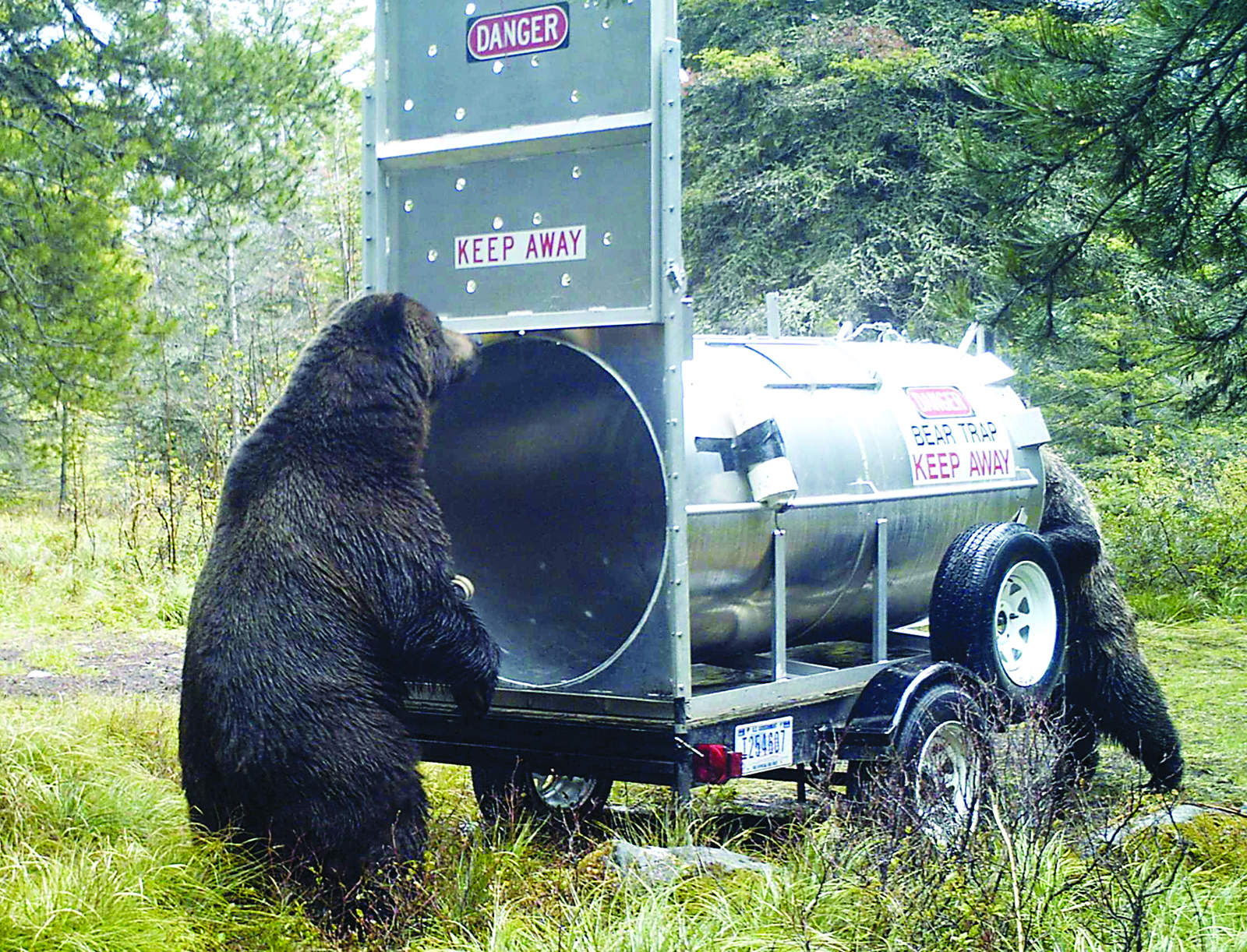Grizzly Bear Monitoring Project Continues in Glacier Park
From May through October, wildlife managers will use bait stations to trap and radio-collar female grizzlies as part of long-term monitoring project launched in 2004
By Tristan Scott
A long-term program to monitor grizzly bears in the Northern Continental Divide Ecosystem (NCDE) enters its 20th season in Glacier National Park this summer as wildlife biologists from Montana Fish, Wildlife and Parks (FWP) begin deploying bait stations, trail cameras and traps to capture and radio-collar female bears.
Park officials in a May 18 press release warned that bait stations and trap sites will be marked with brightly colored signs and urged visitors to heed them while staying clear of areas marked for trapping.
Trapping efforts will continue at various locations throughout Glacier National Park between May and October.
As part of the interagency monitoring study, state, federal, park and tribal wildlife biologists try to maintain a sample of 10 radio-collared female grizzly bears in the park, where an estimated 300 grizzly bears live.
According to Dillon Tabish, information and education specialist for FWP’s Region 1, the number of radio-collared female bruins fluctuates from year to year as the telemetry collars drop off, bears shed them or die.
“Our goal is to try and maintain a baseline of about 25 radio-collared grizzly bears in the entire Northern Continental Divide Ecosystem,” Tabish said, noting that an estimated 1,100 grizzlies inhabit the NCDE.
So far this year, FWP is tracking 22 radio-collared bears. Last year, the agency monitored 34 grizzlies, 27 of which were female.
According to Glacier Park officials, in 2010, a man was killed by a grizzly east of Yellowstone National Park after he wandered into a capture site.
“The warning signs are for visitors’ protection to avoid dangerous human-bear interactions,” according to the park’s news release.